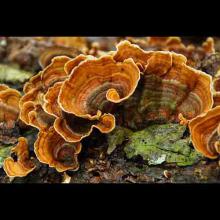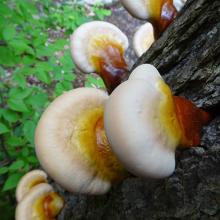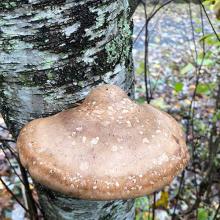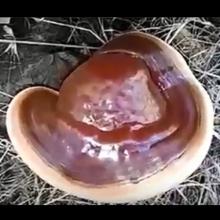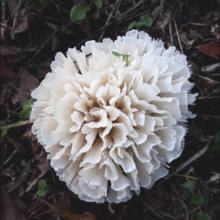Trametes versicolor
Common name:
Turkey tail
Family:
Polyporaceae
Order:
Polyporales
Class:
Agaricomycetes
Ganoderma tsugae
Common name:
Hemlock varnish shelf
Family:
Ganodermataceae
Order:
Polyporales
Class:
Agaricomycetes
Fomitopsis betulina
Common name:
Birch polypore
Family:
Fomitopsidaceae
Order:
Polyporales
Class:
Agaricomycetes
Ganoderma lucidum
Common name:
Bracket fungus
Family:
Ganodermataceae
Order:
Polyporales
Class:
Agaricomycetes
Irpex rosettiformis
Common name:
Poretooth rosette
Family:
Irpicaceae
Order:
Polyporales
Class:
Agaricomycetes
Trametes versicolor
Common name:
Turkey tail
Family:
Polyporaceae
Order:
Polyporales
Class:
Agaricomycetes
Ganoderma tsugae
Common name:
Hemlock varnish shelf
Family:
Ganodermataceae
Order:
Polyporales
Class:
Agaricomycetes
Fomitopsis betulina
Common name:
Birch polypore
Family:
Fomitopsidaceae
Order:
Polyporales
Class:
Agaricomycetes
Ganoderma lucidum
Common name:
Bracket fungus
Family:
Ganodermataceae
Order:
Polyporales
Class:
Agaricomycetes
Irpex rosettiformis
Common name:
Poretooth rosette
Family:
Irpicaceae
Order:
Polyporales
Class:
Agaricomycetes
Trametes versicolor
Common name:
Turkey tail
Family:
Polyporaceae
Order:
Polyporales
Class:
Agaricomycetes
Ganoderma tsugae
Common name:
Hemlock varnish shelf
Family:
Ganodermataceae
Order:
Polyporales
Class:
Agaricomycetes
Fomitopsis betulina
Common name:
Birch polypore
Family:
Fomitopsidaceae
Order:
Polyporales
Class:
Agaricomycetes
Ganoderma lucidum
Common name:
Bracket fungus
Family:
Ganodermataceae
Order:
Polyporales
Class:
Agaricomycetes
Irpex rosettiformis
Common name:
Poretooth rosette
Family:
Irpicaceae
Order:
Polyporales
Class:
Agaricomycetes
Order (Fungi): Polyporales
The Polyporales are an order of about 1800 species of fungi in the division Basidiomycota. The order includes some (but not all) polypores as well as many corticioid fungi and a few agarics (mainly in the genus Lentinus). Many species within the order are saprotrophic, most of them wood-rotters. Some genera, such as Ganoderma and Fomes, contain species that attack living tissues and then continue to degrade the wood of their dead hosts. Those of economic importance include several important pathogens of forest and amenity trees and a few species that cause damage by rotting structural timber. Some of the Polyporales are commercially cultivated and marketed for use as food items or in traditional Chinese medicine.
Importance
Many wood-decay fungi in the genera Fomes, Fomitopsis and Ganoderma are pathogenic, causing butt and root rot of living trees and consequent losses in forestry plantations. Several species, such as the mine fungus Fibroporia vaillantii, can rot and damage structural timber.
Several of the Polyporales, notably Ganoderma lucidum (ling-zhi), Grifola frondosa (maitake), Taiwanofungus camphoratus (niú zhāng zhī), Lignosus rhinocerotis, and Trametes versicolor (yun-zhi), are commercially cultivated and marketed for use in traditional Chinese medicine. The polypores Laetiporus sulphureus, Fomes fomentarius, Fomitopsis pinicola, Fomitopsis betulina, and Laricifomes officinalis have been widely used in central European folk medicine for the treatment of various diseases.
Some species, including several members of the genera Laetiporus and Sparassis, are used as food. Blackfellow's bread, or Laccocephalum mylittae, is an edible that is prized by Aboriginal Australians. Lentinus squarrosulus is collected and eaten in Asian and African communities.
Fomitopsis betulina was formerly used in the manufacture of charcoal crayons. Amadou, a spongy material derived from the fruit bodies of Fomes fomentarius, has been used since ancient times as a tinder. More recently, it has been used by dentists as a styptic, or as a felt-like material for making hats and other items. The anise-scented fruit bodies of Haploporus odorus were used by some tribes of Plains Indians as a component of sacred objects. Laricifomes officinalis was used by nineteenth century Pacific northwest shamans for carving spirit figures. Some species, including dyer's polypore (Phaeolus schweinitzii) and purple dye polypore (Hapalopilus nidulans) are used in mushroom dyeing.
Reference: Wikipedia

